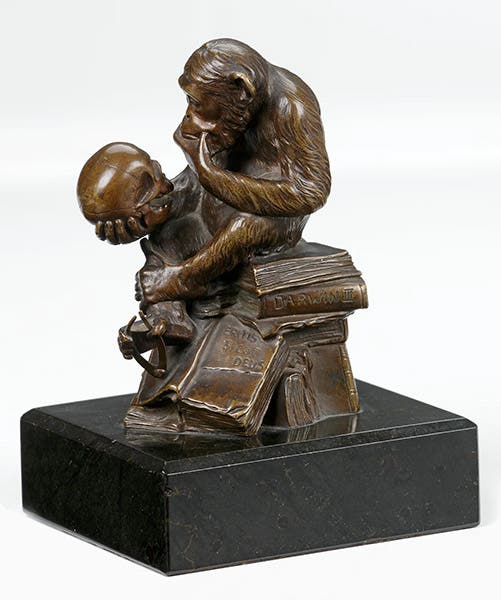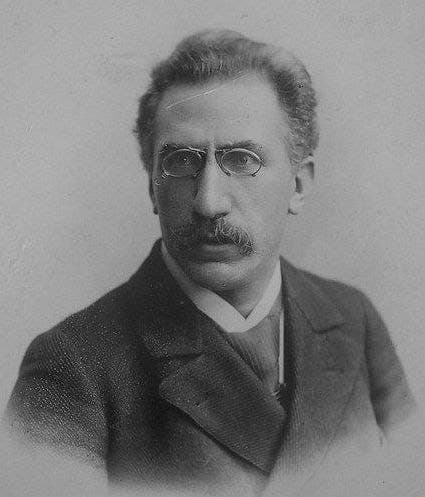Scientist of the Day - Hugo Rheinhold
Wolfgang Hugo Rheinhold, a German sculptor, died Oct. 2, 1900, at the young age of 47. He started his career as an import/export merchant, living in both the United States and Germany. He married in 1880, but when his wife died suddenly in 1882, he was deeply affected, sold off his business (which was doing quite well), and returned to school in Berlin. After pursuing scientific studies for a while, he finally opted for art, and enrolled in the Berlin Academy of Arts, where he studied sculpture until 1892. He sculpted a variety of pieces in the eight years of artistic life that was to be allotted to him.
But it was Rheinhold’s very first sculpture that was to make his reputation, at least in circles that include the history of evolutionary thought. It was called Affe mit Schädel (Monkey with skull), and it was hardly monumental, being but 15 cm (6 in.) tall, with the base. It shows a chimpanzee, in a pose reminiscent of Rodin's The Thinker, contemplating a human skull. His expression is wonderful – bemused might be a good descriptor. What is this arrogant upstart?, he seems to be thinking. His approach to the mystery of humankind is semi-scientific, as he clutches a set of calipers in one foot (let's see you do that, human). His gaze is also informed, as he sits on a pile of books, on one of which is written: "Darwin." On another book is inscribed: "Eritis sicut deus," the beginning of the serpent's utterance to Eve in Genesis, "You will be like God [knowing good and evil]".
One can find two forms of the original sculpture, a 15-cm version and a 27-cm version. The original foundry was Gladenbeck in Berlin, which did very fine bronze casting (they did the statue of Alexander von Humboldt in Chicago), and I believe our initial image, found on an art dealer’s website, is a Gladenbeck production. The other one, from which we show a detail (third image) is different, and larger. There are what seem to be original castings in various medical schools in Edinburgh, Boston, London, and a few other sites, but I could not find any in major museums of art, such as the Met, or the National Gallery of Art in Washington, D.C. They probably exist, waiting for me or someone to stumble upon them. Perhaps the most famous original resides on a table in Lenin’s office in the Kremlin, which they have kept as a museum piece, just the way Lenin left it (fourth image).
For the modern collector, there are dozens of more recent models on the market, none from the original molds, made from bronze, cast stone, or plaster, and differing in their details, and especially in their finish. If you look for one, check it out closely, so you are not disappointed. I have a replica made by Alva Museum Replicas in the 1970s, and it is quite nice. My Affe mit Schadel resides in a special niche in our master bath, where he makes us smile quite often (fifth image).

Affe mit Schädel, small version, copy after the Rheinhold original by Alva Museum Replicas, 1970s (author’s collection)
William B. Ashworth, Jr., Consultant for the History of Science, Linda Hall Library and Associate Professor emeritus, Department of History, University of Missouri-Kansas City. Comments or corrections are welcome; please direct to ashworthw@umkc.edu.










